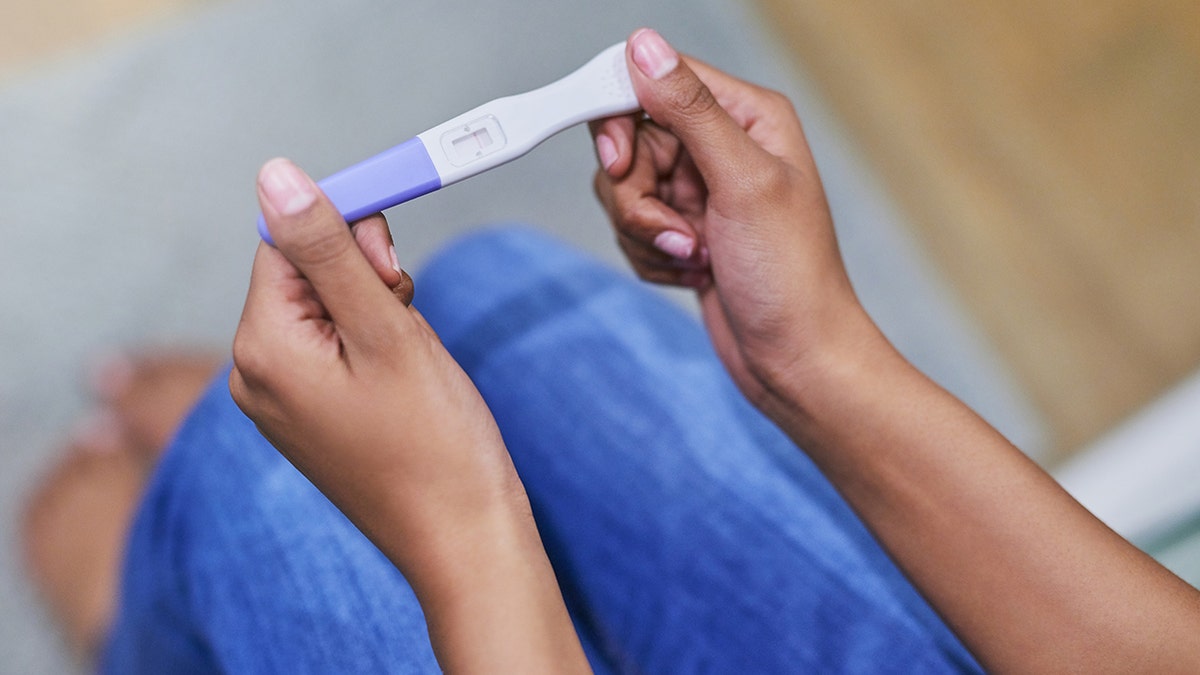
(iStock)
If you’ve made the monumental decision to get pregnant and it’s taking longer than anticipated, you’ve likely found yourself in the midst of an emotional storm—without an umbrella. The unsettling mix of anger, frustration, defeat and disappointment comes from feeling vulnerable and out of control, said Jessica Zucker, Ph.D., a Los Angeles-based psychologist specializing in women’s health.
“We’re used to thinking that if we try hard enough for something, we can attain it,” she explained. “But that’s not always the case with pregnancy." You can get as straight-A about it as you want, Zucker added. "But there’s no knowing when and if it will happen.”
The truth is, every woman is different and every situation, unique.
PAIN DRUGS IN PREGNANCY TIED TO ADHD
“There are a multitude of reasons someone might not be able to get pregnant,” said Alexis Melnick, ob-gyn at New York-Presbyterian/Weill Cornell Medical Center. “Some are medical, others environmental.”
The good news is that many such conditions are treatable. If you’re in your 30s and have been trying for a year or more without success, or you're in your 40s and have passed the six-month point, here are some common culprits that may be standing between you and mamahood:
Endometriosis
Menstrual cramps in themselves won’t impede your chances of conceiving. But severe cramps are a symptom of endometriosis, which can lead to infertility.
“The most common symptom of the condition, which occurs when the uterine lining grows outside the uterus, is painful periods,” said Melnick.
Others include chronic pelvic pain and discomfort during intercourse. Around 10 percent of women suffer from endometriosis, and up to 50 percent of those women have difficulty getting pregnant. However, diagnosing it can be tough, since a blood test or ultrasound won’t do the trick. If you’re diagnosed with the condition after receiving diagnostic laparoscopic surgery, a reproductive endocrinologist may recommend surgery or another treatment.
“In mild cases, basic assisted reproductive techniques such as IVF can help,” said Melnick.
Anovulation
Anovulation, or the absence of ovulation, can also hamper your chances of conceiving. There are multiple anovulation triggers, including polycystic ovary syndrome (PCOS), a condition that wreaks havoc with estrogen and progesterone levels; obesity; primary ovarian insufficiency (POI), typically caused by chromosomal defects or genetic mutations; thyroid dysfunction; hyperprolactinemia, a hormonal condition; and excessive exercise.
“Understanding the cause of anovulation is key to treatment,” said Melnick.
In some cases, as with thyroid dysfunction or hyperprolactinemia, the problem can be reversed with medication. In others, patients may require fertility treatment.
Uterine Fibroids
Uterine fibroids (a.k.a. benign tumors) can cause infertility.
“Submucosal fibroids, those within the uterine cavity, are the ones that we worry about from a fertility standpoint because they can hinder implantation,” said Melnick.
Two tests, a saline sonogram or hysterosalpingogram (HSG), are used to evaluate the uterine cavity. Fibroids within the cavity can be removed in a minimally-invasive surgical procedure called a hysteroscopy. (Larger fibroids sometimes require a second surgery.)
Fallopian Tube Damage
Your fallopian tubes may also be at fault. Tubal damage, a complete or partial blocking and/or scarring of the tubes, can result from a variety of causes, Melnick said. One that may surprise you: STIs, particularly chlamydia. Approximately one-quarter of all diagnosed infertility cases in the U.S. stem from a tubal factor, according to Columbia University Medical Center. An HSG can determine whether your tubes are open or closed. Tubal reconstructive surgery can repair minimally-damaged fallopian tubes. In more severe cases, IVF can actually bypass the tube and help you conceive.
Your Partner
Another issue not to be overlooked: your partner. Melnick said male fertility is the sole cause in 20 percent of couples, and contributes to infertility in another 30 to 40 percent. Before you seek any type of fertility treatment, she recommends that your partner get a semen analysis to see if his little swimmers are capable of backstroking their way to the cervix, uterus, and fallopian tubes. If not, artificial insemination and IVF are both viable options.
Tobacco Smoke
Aside from medical conditions, there are many environmental factors that could lower your chances of conceiving. Mark Payson, M.D., the practice director of the Colorado Center for Reproductive Medicine Northern Virginia, calls tobacco smoke “environmental enemy #1” when you’re trying to get pregnant.
FDA MOVES TO REVOKE CLAIM THAT SOY PROTEIN PROTECTS THE HEART
“It not only causes a significant decrease in fertility, it also causes complications in pregnancy,” he said.
Stress
Another major environmental factor? Stress. While Payson acknowledges that a little angst and agitas allows you to perform well in daily life, chronic stress can trigger hormonal changes that affect almost all organ systems.
“In some cases, stress will lead a woman to stop ovulating so that her menstrual period changes or stops altogether,” he said.
Removing yourself from a stressful work environment by scheduling a pre-babymoon works wonders for some, while others benefit from moderate exercise, meditation, yoga or acupuncture.
Above all, it’s crucial to engage in any activities that kept you feeling grounded, positive, and productive before you started trying to conceive.
“It’s tempting to get so focused on getting pregnant that other things go mute,” Zucker explained. “But that only adds to the pain.”
This article first appeared on Women's Health.




















